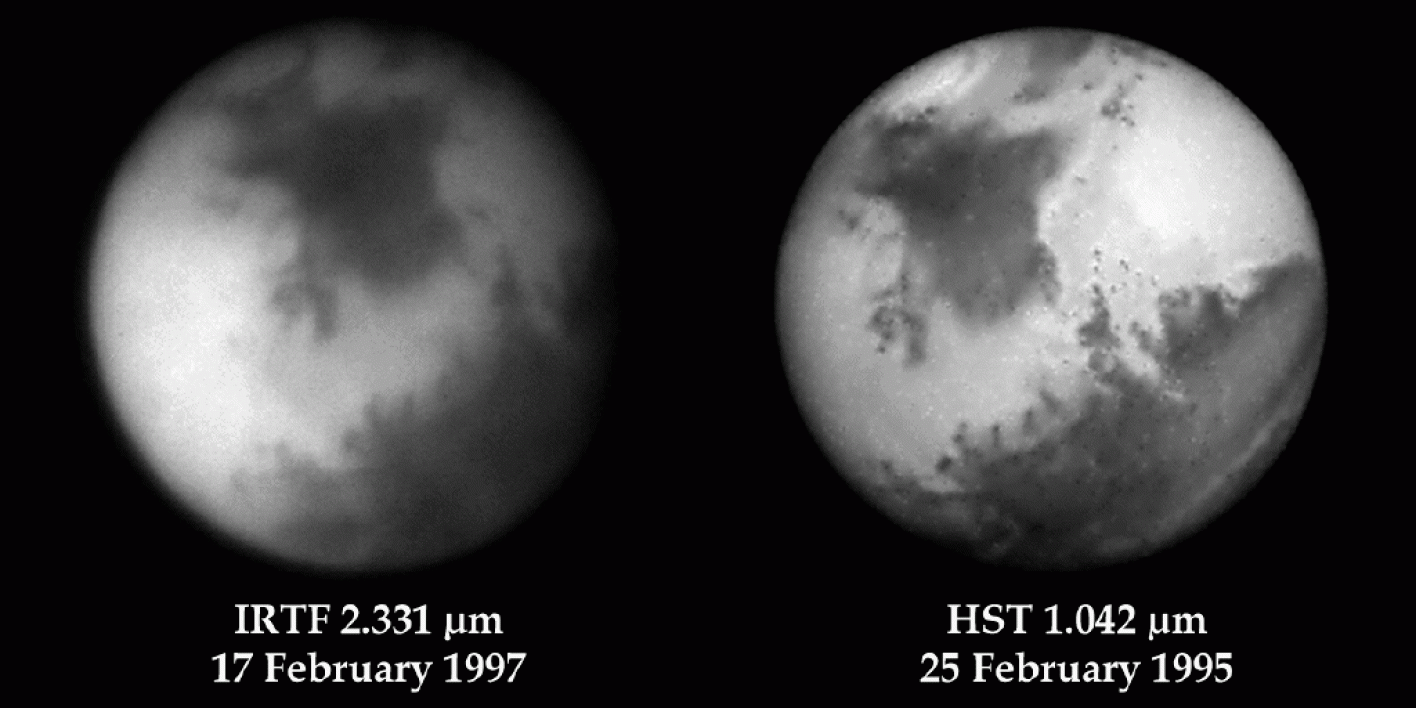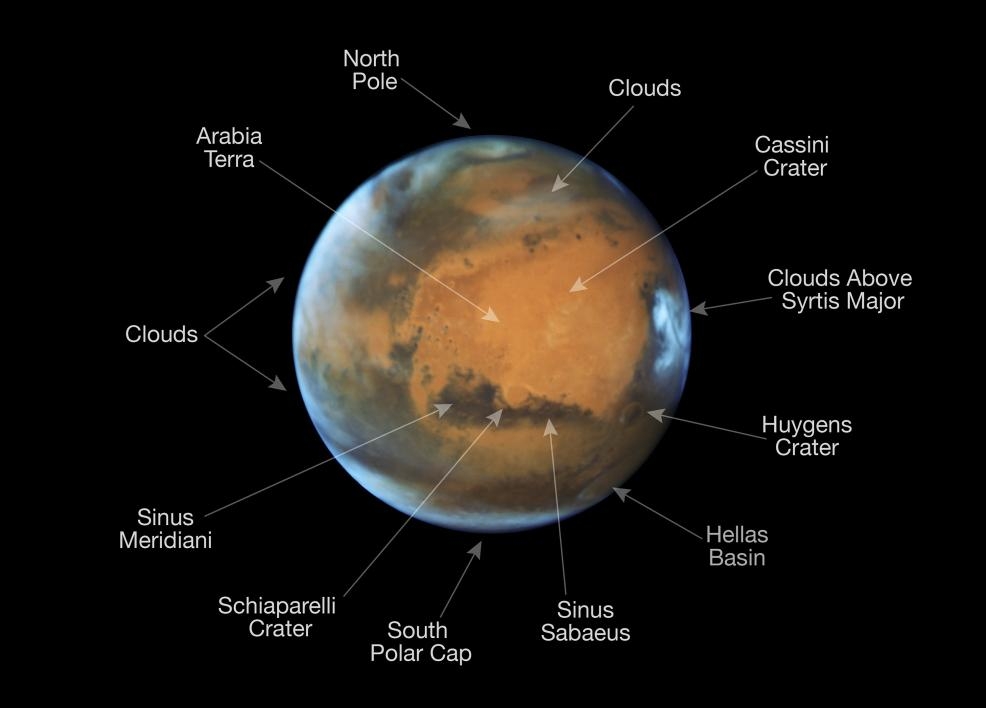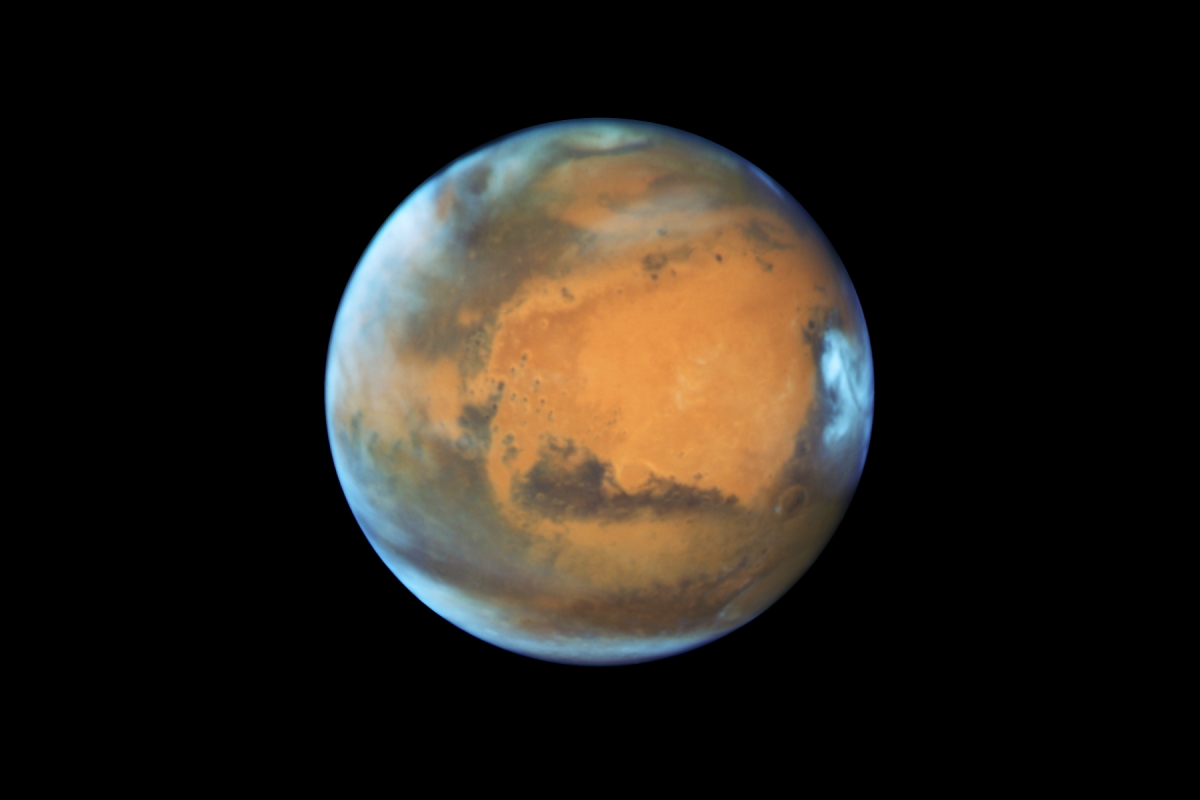Here's looking at you, Mars
New image of Red Planet a high point in ASU professor's long involvement with global monitoring of our solar-system neighbor

Every two years Earth and Mars reach a point in their orbits where the distance between them is shortest. That's a time when telescopes big and small, both on the ground and in orbit, turn toward the Red Planet in hopes of learning more about this dynamic neighbor world.
For the Hubble Space Telescope, an image taken May 12 and released today shows Mars in a way unseen even by the spacecraft that are orbiting the planet. The image, taken at a distance of 50 million miles, continues a series, most recently as part of the Hubble Heritage observing program, that has run unbroken since 1993.
For ASU professor Jim Bell, who helped NASA plan the Hubble observation, Mars has been part of his professional life for longer than that.
"I started observing Mars back in 1986," he said. "It was for a summer student research project, and I was trying to understand the composition of rocks on the surface."
Bell is a professor in ASU's School of Earth and Space Exploration, where his research deals with solar system geology and geochemistry. He is heavily involved in three Mars surface instruments: the Panoramic Camera on NASA's Mars Exploration Rover Opportunity, the Mastcam on NASA's Curiosity rover, and the Mastcam-Z on NASA's forthcoming Mars 2020 rover. He serves as principal investigator for the latter.
"At the time I started as a graduate student, there were no spacecraft orbiting Mars," he said, "so I was using telescopes at several observatories on the ground, in particular on Mauna Kea in Hawaii." The main instrument used was a spectrometer, which precisely measures the light reflected from a planet across a great many colors to identify its minerals.
"There were other planetary scientists at telescopes taking regular images to monitor the atmosphere of Mars — its clouds and hazes and dust storms. I was mostly interested in the composition of the surface. Because I was observing a bright, relatively nearby astronomical body and didn't need super-dark, moonless nights, I had essentially unlimited time on smaller telescopes that were largely unused."
Planetary scientist Jim Bell of the School of Earth and Space Exploration finds that the Hubble Space Telescope gives views of Mars that no orbiter can provide. Photo by Deanna Dent/ASU Now
The spectrometer measured just one small spot on Mars, about the size of Arizona, Bell explains. "I could point the telescope to drive the instrument around Mars, getting spectra of various places — Syrtis Major, the polar caps, everywhere."
Later, for his doctoral work, Bell used a slit spectrometer instead of a point detector. He lined up the slit's long axis with the rotation axis of Mars and slewed the telescope across the planet, making an image. He also expanded his imaging work into the infrared part of the spectrum.
Along came Hubble
Bell said, "Mars was one of the first things Hubble looked at after it was launched. It was nearby, bright, easy to point to, and it was a popular target for the public."
At the time Hubble had a severe focus problem, fixed eventually with corrective optics. "Those early images were fuzzy and blurry," said Bell. "But if you go back to that first Mars photo, it's still better than the best ground-based imaging up to that date."
Once NASA fixed Hubble's optics, the first properly focused Mars image (taken in 1993) showed spectacular results.
"I joined the team then," said Bell, "when few people were trying to figure out Martian rock and soil compositions. Yet Hubble's cameras and spectrometer observe at wavelengths that are great for studying the surface."
Complementing Hubble, NASA plans to launch in 2018 the James Webb Space Telescope, which will work at infrared (heat) wavelengths. Bell and others hope to use it to study Mars as well.
"The software has been written to let it track on Mars, so Mars will be part of its observing program, too," Bell said.
Point of view
Although Hubble's Mars is not as detailed as images from NASA's Mars orbiters, Bell said, it provides an "all-day" view no orbiter can give.
"Orbiters at Mars follow paths that take them over the ground at a fixed time of day, such as mid-afternoon," he said. "With lots of images, these can be stitched together into a somewhat artificial view that shows Mars at mid-afternoon all the way around the planet.
"But Hubble's view shows a Mars that has morning, noon and afternoon all in one shot. It lets us see hazes and clouds and other atmospheric features that come and go at times of day that the orbiters are not studying."
Bell's scientific work has taken him on a journey from the classical kind of telescopic Mars observing to driving rovers across the planet. He said, "It's been fascinating going from the telescopic world, where we're looking at fuzzy regions the size of entire states, to where we're now drilling into rocks on the Martian surface to study the detailed habitability of the place."
ASU's School of Earth and Space Exploration (SESE) stands at a pivotal point, he said. "The experience and expertise of my colleagues in SESE, from astronomers to geologists to planetary scientists, working closely with engineers, makes for a great parallel to the heritage and history of Mars exploration.
"Telescopes are still doing valuable Mars observing, along with spacecraft studies. It would be great if we could do a similar transition for all the planets, moons, asteroids and comets in our solar system!"
More Science and technology

ASU receives 3 awards for research critical to national security
Three researchers in the Ira A. Fulton Schools of Engineering at Arizona State University have received grant awards under the Defense Established Program to Stimulate Competitive Research, or…

Celebrating 34 years of space discovery with NASA
This year, NASA's Hubble Space Telescope (HST) is celebrating its 34th anniversary of the world's first space-based optical telescope, which paved the scientific pathway for NASA's James Webb Space…

Making magic happen: Engineering and designing theme parks
The themed entertainment industry is widespread and diverse, encompassing everything from theme parks to aquariums, zoos, water parks, museums and more. The Theme Park Engineering and Design…



